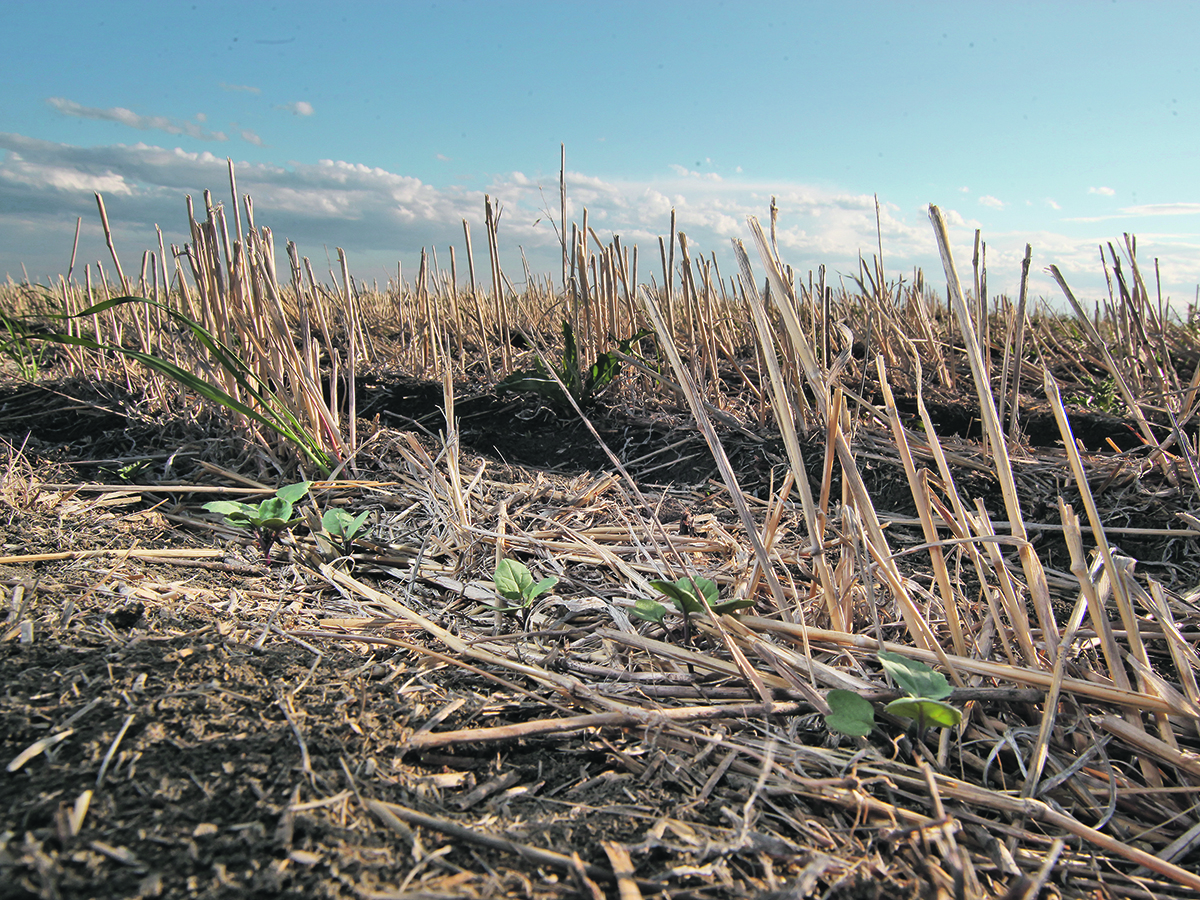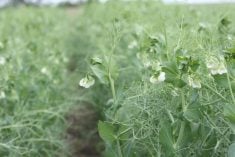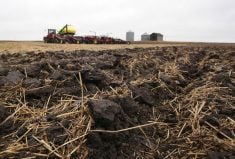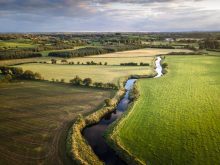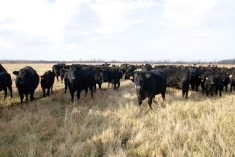MINNEAPOLIS, Minn. — Anastasia Volkova is the type of person who gets right to the point.
During a coffee break at a sustainable agriculture conference, held in early October in Minneapolis, she provided a six-minute, rapid fire explanation on how farming can be transformed in North America and around the globe.
That transformation needs to happen, she said, because climate change and extreme weather have become massive risks for crop production.
Read Also

Fertilizer method’s link to emissions studied
A researcher says others studying greenhouse gas emissions aren’t considering how the loss of nitrogen into the atmosphere correlates with fertilizer application or if there is an impact to yield.
“We’re hearing directly from producers … that the failure of crops and the inability to work the land, because of a flood or drought, is really wrecking their bottom line,” said Volkova, chief executive officer and founder of Regrow Ag, a U.S. firm that connects farmers with agri-food businesses to “dramatically reduce land-based emissions” from agriculture.
For Volkova, the solution to cutting emissions and making farming more resilient is regenerative agriculture.
That involves practices like cover crops, reduced tillage, diverse crop rotations and use of livestock, all connected to the larger goal of improved soil health.
The shift toward regenerative agriculture will happen in three stages, according to Volkova:
- short-term incentives for farmers to adopt certain practices and payments for cutting greenhouse gas emissions;
- medium-term benefits to farmers, because better soil should mean less need for fertilizer and pesticides; and
- long-term resilience for producers and food supplies, since regenerative farming is more resilient to drought, flood and severe weather.
“Being able to maintain yield, or almost the same yield, in catastrophic loss years, will drive the premium for the farmer when the supply for neighbouring farms will not be as resilient,” said Volkova, who was born in Ukraine and has a PhD in aerospace engineering.
She and her team at Regrow have built a sustainability platform that allows agri-food companies to track greenhouse gas emissions.
As an example, Cargill may want to know the on-farm emissions from the spring wheat it purchases in Saskatchewan and North Dakota so it can report on the carbon emissions in its supply chain.
Volkova isn’t the only person leading the charge for regenerative agriculture, also called climate-smart agriculture.
PepsiCo has a goal of seven million acres in its supply chain, in which farmers follow regenerative practices.
McCain Foods, General Mills and Mars have similar targets.
There are also environmental groups, charitable foundations and chief sustainability officers at massive companies who are leaning hard on the regenerative boulder.
They’re all trying to push it uphill because they’re convinced that regenerative ag practices must become standard practices on tens of thousands of farms.
“For us to cool the planet and leverage the soil for the carbon sequestration … this has to be the new norm for all farming,” Volkova told Reuters last summer.
There are dozens of programs and projects in North America that encourage farmers to plant cover crops and try related practices. The words used to describe the projects include regenerative, climate-smart, resilient, and so on.
In Canada, the federal government created the On-Farm Climate Action Fund and committed more than $200 million to projects coast to coast. OFCAF, as it’s sometimes called, promotes cover crops, nitrogen management, rotational grazing and other practices that reduce on-farm emissions and store carbon in the soil.
South of the border, the U.S. Department of Agriculture has promised to spend $3.1 billion on about 140 climate-smart agriculture projects.
In addition to government, corporations and environmental groups also have incentive programs for climate-smart ag.
Tony Mellenthin, a Wisconsin farmer, tried one of the programs in 2024. Speaking in October at the Reuters Transform Food & Ag conference in Minneapolis, Mellenthin said the sheer number of sustainability projects and incentives is overwhelming.
“It is (an) incredibly complex marketplace to navigate.”
Some farmers are long-time participants in these programs.
Paul Overby, who farms near Wolford, North Dakota, has partnered with General Mills on a regenerative oats program since 2018.
The education in the program, from agronomists and other soil health experts, has changed Overby’s approach to farming.
He spoke at the Manitoba Forage & Grassland Association Regenerative Agriculture conference Nov. 12-13 in Brandon.
During a PowerPoint presentation, Overby summed up his new approach to crop production. Previously, he worried about price, weather, labour and risk management. Now, he thinks about less fertilizer, fewer pesticides, carbon in the soil, habitat for insects and birds, and zone mapping.
Overby believes zone mapping fields is critical for regenerative ag because certain parts of a field are not profitable and should be taken out of crop production.
He now employs a complex crop rotation, growing canola, sunflowers, oats, soybeans, field peas, spring wheat, millet and flax. He’s also experimenting with less nitrogen or zero application of phosphate for certain crops in the rotation.
The goal is to make the plants “do some of the work” and find nutrients in the soil.
Overby firmly supports regenerative concepts, but he’s unsure about financial incentives. Giving people money isn’t a great way to change behaviour, he notes, pointing to a USDA program that paid growers to plant cover crops.
“As soon as the funding quit, they (some farmers) quit. They learned nothing out of it … they simply took advantage (of) the payment.”
If governments, corporations and environmental groups want to achieve change on the landscape, education and incentives are both needed, and preferably farmer to farmer education, said Overby.
Cash payments alone don’t change habits.
“It’s a transactional thing, not a transformation.”
More than a decade ago, Canada’s organic industry launched a program called the Organic Advantage – Transition to Higher Profits.
It argued that organic grain farmers make more money.
“Field crop producers who transition from conventional to organic production are rewarded with increased profitability,” says an Organic Advantage fact sheet.
The program had a short-term impact on the Prairies. From 2015-18, acreage of organic field crops increased 49 percent, says the Prairie Organic Development Fund.
The increase didn’t last.
Canola prices rocketed upward in 2021, hitting $20 per bushel, and many growers abandoned organic crop production.
From 2018-22, the number of farmers and organic acres in Western Canada likely dropped, but it’s difficult to nail down the size of the decline. Canada’s organic sector has poor data collection and releases statistics that are two or three years out of date.
“But we lost a lot of acres … which suggests to me that some organic guys have let some of their organics land go. And they are growing canola on the side,” said Laura Telford, an organic specialist with Manitoba Agriculture in 2023.
The organic example suggests that economics and incentives can have an impact but if farmers don’t believe in the practices, the change will be temporary.
Ryan Boyd, who farms in Forrest, Man., has attended most of the regenerative ag conferences in Brandon since the event began in 2018.
He’s a Nuffield scholar, studied grazing systems around the globe and is a firm believer in practices that enhance soil health.
A top-down approach to encourage regenerative farming, where farmers are paid for certain practices or outcomes, may not succeed, he said.
“I don’t think the financial incentives will be able to flow adequately from the top down,” he said, as he stood outside the main hall at the conference.
“I hope it does. The problem is, are you incentivizing the right things? Is it going to accomplish what we’re hoping it (does)? Is it actually going to make a difference?”
There’s also the larger truth, which humans have been dealing with for thousands of years: change is hard.
For much of the last 15 years, grain farming has been profitable in Western Canada. Not every year, but growing canola, wheat, pulses and oats has generated profits and sometimes very healthy profits.
That’s why farmland prices have risen dramatically over the last 15-20 years, jumping 300-500 percent on the Prairies.
“What affects farmland values is the profitability of the farmers …. It all boils down to profitability,” said Ted Cawkwell, a real estate agent specializing in farmland, who runs the Cawkwell Group in Saskatoon.
With the massive jump in land prices and farmers making money, they have enjoyed a long period of prosperity.
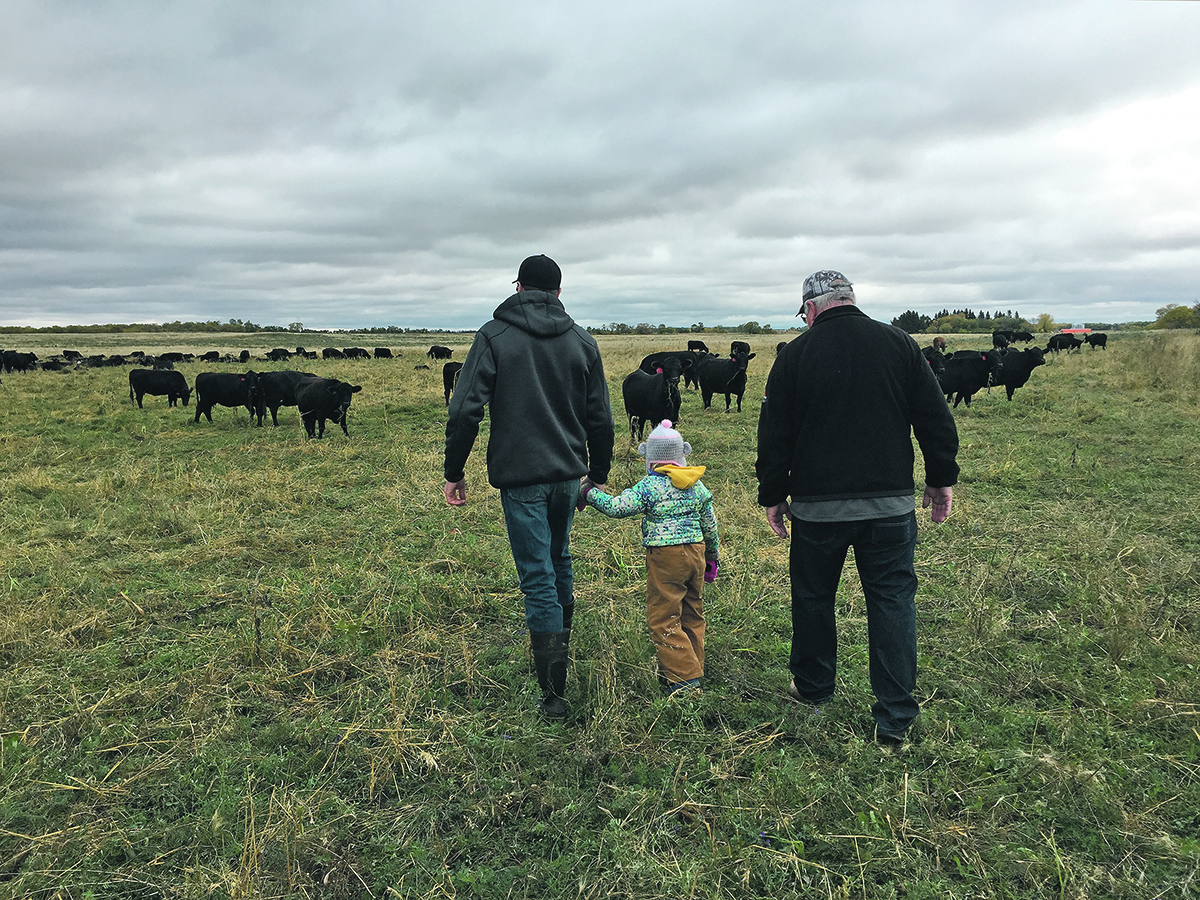
Asking a grower to include five crops in the rotation, plant a cover crop in the fall or bring cattle back to the farm is a difficult sales pitch when the status quo is working.
“Fertilizers work, chemicals work … The reality is, we can’t compete with the energy density of fertilizer,” Boyd said.
“You can’t jam enough energy in a cover crop, in one year, to compete with the results of 120 pounds of nitrogen.”
Boyd probably missed out on some years of big profits from grain production because he raises cattle and has perennial forages on his mixed farm.
He’s focused on stable profits, while farming the way he wants to farm.
“We can’t get to where we want to go if we’re not profitable …. What’s the quote? You can’t be green if you’re in the red.”
One of the challenges with organic farming is it can create an “us” versus “them” narrative. “We” don’t use pesticides and “they” do. Or “they” are growing weeds that spread to neighbouring farms.
There is a risk that climate-smart agriculture will follow the same path, where it becomes divisive within the farm community.
Overby is active on X (formerly Twitter) and he’s aware that some words are explosive. If he mentions the word “regenerative”, it can trigger a response.
“I’ll get some smart-aleck comment. ‘Why do we have to divide farmers into regenerative ag farmers or whatever. Farmers are farmers’,” he said. “People don’t like that concept of being labeled by the practices. They don’t want to be called a ‘climate-smart’ farmer.”
The political divide over climate and agriculture has become a major policy issue in America.
In May, the Democrats and Republicans were battling over the next U.S. farm bill. Republicans in Congress wanted to cut climate-smart ag programs and Democrats insisted that billions in funding should be preserved.
The political combat in Washington is a long way from Boyd’s farm north of Brandon. For him, this issue comes down to personal choice.
If someone wants to grow forage crops and bring cattle back to the farm, that’s up to them. If someone else wants to grow canola and maximize profits, that’s up to them, he said.
If this regenerative movement is going to spread, it will likely happen because producers believe in it and it makes economic sense for their operation.
“I’m partial to the grazing, the perennial pastures. I feel that’s the easy button for all those things. We can have more diversity, more wildlife, more resilient soil and a more resilient system,” Boyd said.
“It has to be grassroots. People (farmers) doing it differently, finding their own premium and finding their own incentive in the supply chain.”


